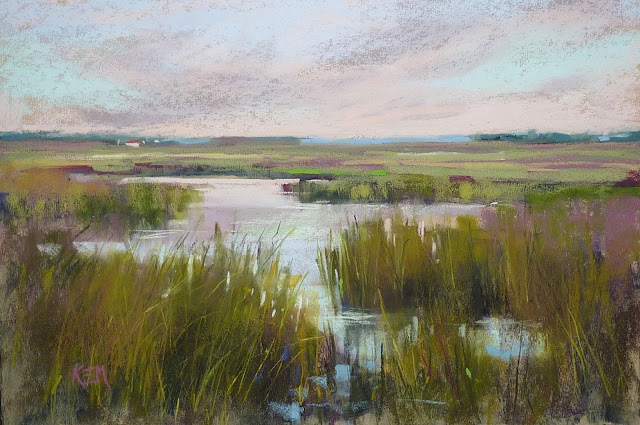I made time today for a quick daily painting. But it took me longer than I had planned. Sometimes that happens. Actually it happens more often than not. I start out with a plan and good intentions and sometimes the plan doesn't unfold without a struggle. In this case I struggled with the bits of snow on the ground of my reference photo. In the end the snow decided to become spent wildflowers...white puffy seed heads. Here is how the painting evolved....
It began on the right track. I was using a piece of pastel paper that I treated with clear gesso to give some random texture. I blocked in the shadowed areas with cool (blues) and the sunlit area with orange.
I continued working with warm and cool to keep the feeling of sunlight on the grasses and trees in the distance. I used pale orange and pale blue to block in the bits of snow on the ground. I added the tree trunks. So far so good.
I continued the warm and cool layers. I liked the texture of the gessoed board.
I painted the blue sky and carve the distant tree. I haven't yet worked on the field or snow.
I added some violet to the grasses for interest and darkened the area around the snow pieces.
I started to add the grasses and this is where I ran into trouble. The snow didn't look like snow. It kept wanting to look like flowers. I brushed out and sprayed and tired again....and again....and again. There are no photos because I was too busy trying to resolve the snow in the foreground. I was getting frustrated but determined to make it work!
At one point I thought I was happy with it but it seemed confusing to me. Was it snow or flowers?
I tried once more to make it snow. No luck. The bits of white fluff wanted to be flowers or seed puffs and I wasn't going to stop it any longer.
Since I was committed to redoing the foreground I decided to place them in a more pleasing arrangement and added some darks and some stems. This quick daily painting was finished!






















































